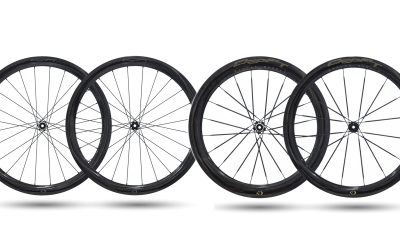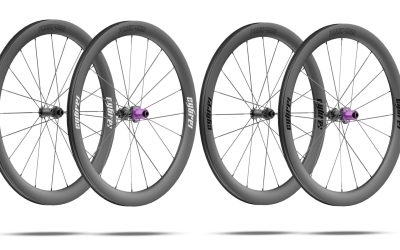How to Choose the Correct Rim Width?
Choosing the correct rim width for your road bike is an important decision that can have a significant impact on your cycling experience. The right rim width will ensure that your bike is safe, comfortable, and efficient. Here are some factors to consider when selecting a rim width:
Tire Size
When choosing a rim width for your road bike, the first thing to consider is the tire size you plan to use. Different tire sizes require different rim widths to ensure optimal performance. For instance, narrower tires ranging from 23-25mm require a narrower rim width of about 17-19mm. This ensures that the tire has a stable base and doesn’t bulge out to the sides, which can cause pinching and flats.
On the other hand, wider tires ranging from 28-32mm require a wider rim width of about 19-21mm. This ensures that the tire has the appropriate level of support and stability, and doesn’t deform or flatten out on the road surface, which can compromise grip and handling.
Besides tire size, your riding style also influences your choice of rim width. If you plan to do a lot of racing or fast-paced riding, a narrower rim would be suitable for improved aerodynamics and reduced weight for easier acceleration and climbing.
However, if you plan to do more touring or endurance riding, a wider rim would offer greater stability and comfort. It would provide a larger contact patch with the road, enhancing grip, reducing flats, and absorbing more road vibrations for a smoother ride.
Finally, your weight can also impact your choice of rim width. Heavier riders would benefit from a wider rim for greater support and stability, especially if they carry a lot of gear or plan to do loaded touring.
Riding Style
The type of riding you plan to do is an important factor to consider when choosing the right rim width for your road bike. It’s essential to think about the type of terrain you will be riding on, the speed you plan to ride at, and the distance you intend to cover.
If you plan to do a lot of racing or fast-paced riding, you may want to consider a narrower rim width for improved aerodynamics. This will allow you to cut through the air more efficiently, reducing wind resistance and helping you to achieve higher speeds. A narrower rim can also be lighter in weight, which can improve your bike’s acceleration and climbing abilities.
However, if you plan to do more touring or endurance riding, a wider rim may provide greater stability and comfort. This is especially important when you are covering long distances, as it will help to reduce the impact of road vibrations on your body. A wider rim will also offer a larger contact patch with the road, enhancing grip and reducing the likelihood of flats.
If you plan to do off-road riding, such as gravel or mountain biking, you may want to consider a wider rim to provide additional support and stability. A wider rim can accommodate wider tires, which are necessary for off-road riding. The wider tire provides more surface area for better traction and stability on rough terrain, while the wider rim helps to keep the tire firmly in place.
Rider Weight
When selecting the right rim width for a road bike, it’s essential to consider the weight of the rider. Heavier riders can put more stress on the wheels, which can affect the bike’s performance and stability. Therefore, a wider rim can provide greater support and stability for riders who weigh more.
A wider rim offers a larger surface area for the tire to make contact with the ground, distributing the rider’s weight more evenly. This can lead to a smoother and more stable ride, reducing the risk of the wheels bending or buckling under the weight.
In addition to support and stability, a wider rim can also improve the overall durability of the wheel. The extra width of the rim helps spread the load across the wheel, reducing the strain on individual spokes and improving the overall strength of the wheel.
It’s important to note that a wider rim may not be the best solution for every rider. Riding style, terrain, and tire selection are other factors that can impact bike performance and stability. Therefore, it’s important to take all of these factors into account when selecting the appropriate rim width.
For heavier riders, it’s also crucial to invest in high-quality wheels designed to handle the additional weight. Look for wheels with a high spoke count and made from durable materials. This investment can help ensure that the bike can handle the weight and provide a comfortable and enjoyable riding experience.
Conclusion
When choosing the appropriate rim width for a road bike, it’s important to take into account the size of the tires you plan to use. For instance, narrow tires ranging from 23-25mm require a rim width of 17-19mm to ensure a stable base, while wider tires between 28-32mm require a rim width of 19-21mm for appropriate support.
However, the choice of rim width also depends on other factors, such as your riding style, the terrain you plan to ride on, and your weight. Therefore, seeking advice from a professional at a bike shop is recommended to determine the ideal rim width for your specific needs.


















Leave a Reply
You must be logged in to post a comment.